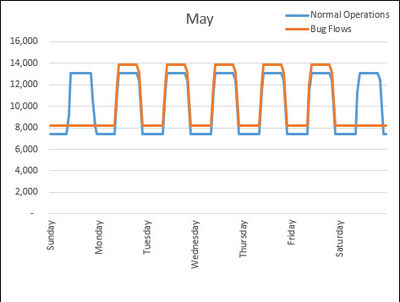Difference between revisions of "The Bugflow Experiment"
Cellsworth (Talk | contribs) |
Cellsworth (Talk | contribs) |
||
| Line 83: | Line 83: | ||
*[http://gcdamp.com/index.php?title=FOOD_BASE Food Base Page] | *[http://gcdamp.com/index.php?title=FOOD_BASE Food Base Page] | ||
| + | |- | ||
| + | ! <h2 style="margin:0; background:#cedff2; font-size:120%; font-weight:bold; border:1px solid #a3b0bf; text-align:left; color:#000; padding:0.2em 0.4em;"> LTEMP Experimental Action: Aquatic Resource-Related Experimental Treatments (BA, pages 30-41) [https://www.fws.gov/southwest/es/arizona/Documents/Biol_Opin/120059_LTEMP%20BiOp_11-25-16.pdf] | ||
| + | </h2> | ||
| + | |- | ||
| + | |style="color:#000;"| | ||
| + | |||
| + | [http://gcdamp.com/index.php?title=The_Bugflow_Experiment '''Low steady weekend flows (“bug flows”)'''] would be conducted to test whether the | ||
| + | flows would increase insect abundance. On an experimental basis, for example, | ||
| + | flows would be held low and steady for two days per week (weekends) from May | ||
| + | through August to attempt to improve the productivity of the aquatic food base, | ||
| + | and increase the diversity and abundance of mayflies (Ephemeroptera), stoneflies | ||
| + | (Plecoptera), and caddisflies (Trichoptera), which are collectively referred to as | ||
| + | EPT. | ||
|- | |- | ||
Revision as of 09:32, 4 May 2017
|
|
What is the “bug flow experiment? |
| --- |
--- |
--- |
|---|
|
|
